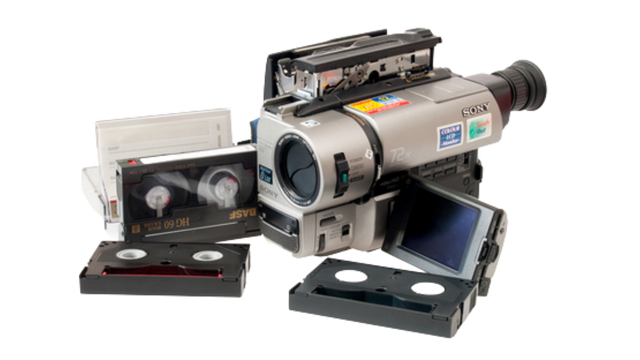VHS tapes once captured life’s most unforgettable moments—first steps, family vacations, weddings. But now they’re taking up space, aging in boxes, and gathering dust. If you're wondering what to do with old VHS tapes, you're not alone. The good news is, you have more options than just throwing them away or stuffing them back in a closet.
Here’s a compassionate, practical guide to help you protect those tapes—and the stories inside them.
1. Store VHS Tapes the Right Way
Before you decide what to do with them long term, proper storage can help keep VHS tapes from deteriorating further. Keep them in a cool, dry place away from direct sunlight, heat sources, or moisture. Never stack them horizontally or near electronics that emit magnetic fields.
Cardboard boxes in a closet are safer than attics, garages, or basements. And if you have a large collection, label each tape so you’ll know what’s worth saving.
2. Check for Mold or Damage
VHS tapes don’t age well. Over time, the magnetic tape inside can suffer from sticky-shed syndrome or attract mold—especially in humid environments. Moldy VHS tapes can spread spores to other tapes and ruin VCR heads during playback.
If you suspect a problem, don't test them in your player. Instead, see what to do if your tape is broken or moldy and consider sending them to professionals with the right equipment.
3. Convert VCR Tapes to Digital Before They Fade
The most important step is transferring the content from VHS to a digital format. Analog signals degrade even without visible damage. Every time you rewind or play the tape, you lose a little more clarity. And that old VCR in your closet? It might not work anymore.
Using a VCR tapes to digital service ensures your memories are preserved with care. Unlike services that still mail DVDs, Heirloom uploads your videos to the cloud so you can access, download, and share them from anywhere.
If you have compact VHS-C tapes, don’t worry—those can be digitized too. Read our guide on VHS-C adapters to learn more.
4. Upcycle or Recycle Old Tapes
If you’ve already digitized your content, what do you do with the physical tapes? Some artists and crafters reuse VHS tape shells in creative projects. You can also check with your local recycling center, but be warned—many won’t take them due to the magnetic tape material.
A safer way to dispose of them is through an e-waste recycling event in your area or by mailing them to a specialty service that breaks them down responsibly.
5. Share the Stories, Not Just the Footage
Converting your old VHS tapes is only part of the journey. The joy is in watching them again—with the people you love. Host a viewing night, surprise a relative with a long-forgotten clip, or use digital editing tools to combine clips into a short family documentary.
What matters most is making these memories part of your life again—not letting them sit, silent and hidden, in a box.
📧 Want more tips like this?
Subscribe to Heirloom emails to learn how to preserve your priceless memories. Get discount codes for expedited shipping, quality digitizing, and secure cloud storage. We never spam, and it’s easy to unsubscribe at any time.



